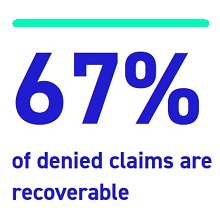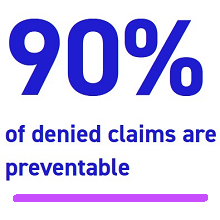Understanding the UB-04Posted on June 25, 2020 Understanding the UB-04 The UB-04 is the uniform billing (UB) form is the standard claim form that any institutional provider can use for the billing of medical claims. The Centers for Medicare and Medicaid Services (CMS) utilizes the CMS-1450 form, also known as the UB-04, for institutional providers to bill Medicare. Understanding the basic components of the UB-04 can help identify billing errors. Bill Type First, you should understand the bill type on the UB04. The bill type refers to a three-digit code. This code is located on the top right-hand corner of the UB-04, specifically, line 4. A bill Type 111 indicates an original bill for an inpatient encounter. A bill Type 117 indicates a revised bill for an inpatient encounter. Billing code 117 on a UB-04 could indicate no appeal is warranted because the provider submitted a revised claim. In this instance, refer to the creation date of the UB-04. The creation date is located on line 23 and indicates the date of the claim. For example, if you have conflicting information between what the payer states was billed and the codes found on the UB-04, check to see if the creation date of the UB-04 was before or after the date of the denial letter. Scenario 1: The denial is dated 4/30/19, indicating disagreement with the coding of the secondary diagnosis X. However, diagnosis X does not appear on the UB-04. (Diagnosis and procedure codes are on the bottom of the UB-04 starting on line 66.) Upon review, the UB-04 indicates bill type 117 with a creation date of 4/22/19. Since the dates are close together, the payer audit likely was performed without the realization of a rebill. Denied codes may not reflect on the UB-04 with bill type 111. If that is the case, question billing to see if a revised bill type 117 was submitted. You may be able to identify many potential billing scenarios that impact denials and appeals by reviewing the bill type and creation date. Make sure to refer to the UB-04 and not a Coding Summary. Coding Summaries are often not accurate. Dates of Service Verify that the documentation you are reviewing is for the correct dates and the right patient. The section called “Statement Covers Period” “from” and “to” (line 6 of the UB04) represents the dates of service. Patients may have multiple admissions or outpatient encounters that converted to inpatient. Only review documentation within the appropriate dates of service for that one specific encounter. Often with electronic records, the ability to see all encounters may be mixed in with one another. Unlike medical necessity denial issues, documentation outside the service dates should not be used for a coding appeal. Present on Admission Sometimes a denial could be related to the Present on Admission (POA) indicators (indicators that determine if the code was present on admission). POAs are located by the diagnosis codes on the UB-04. These indicators can also provide clues to errors. For example, a payer might suggest a different principal diagnosis in their denial because the billed diagnosis has a POA of “N” (no). Procedure Codes Look at the dates which are located by the procedure codes. For example, a patient admitted for a GI bleed underwent two EGD’s, one with a biopsy on 5/03/19, and one without on 4/30/19. Both procedures were billed with a date of 4/30/19. Exact dates of procedures don’t affect the calculation of the grouper; however, the correct date should be applied. The provider should clearly explain in the appeal that there were two separate procedures on two separate dates, one which included a biopsy. Attach the supporting documentation with the explanation. Discharge Disposition If the denial is related to the billed discharge disposition, look for that code on line 17 of the UB04. Groupers When all the codes match up, but the payer’s suggested reimbursement (grouper) does not, reference line 71 to find the PPS code (this is the grouper billed). A 3 digit code such as 853 indicates use of the MS-DRG/DRG grouper. A 4 digit code indicates an APR-DRG grouper. For example, 1633 represents APR-DRG 163 with an SOI (severity of illness) of 3. If the PPS code is blank on the UB04, the reviewer may need to reach out to the billing department. When all the codes match, but the grouper calculation does not consider that the payer may not be using the national norm grouper. The facilities grouper may need updating specific to the payer. Summary Although many of the above scenarios should not occur, the reality is they do and should be considered for possibilities of error. Visit the CMS (Centers for Medicare & Medicaid Services) website at https://www.cms.gov/ for more information regarding provider billing. Specific information on the sections of the CMS 1450 form (aka UB-04) is in the Medicare Claims Processing Manual (Pub 100-4) Chapter 25. https://www.cms.gov/Regulations-and-Guidance/Guidance/Manuals/Downloads/clm104c25.pdf |




